The Serengeti Wildebeest Migration is one of the world’s most incredible wildlife events, and it’s a highlight for many safari travelers. Each year, over 1.5 million wildebeest, joined by zebras and gazelles, make a 1,200-mile circular journey between Tanzania’s Serengeti National Park and Kenya’s Masai Mara. This guide provides a month-by-month breakdown, explains the reasons behind the migration, and explores the impact on the ecosystem, helping you to plan the perfect Serengeti Wildebeest Migration Safari.
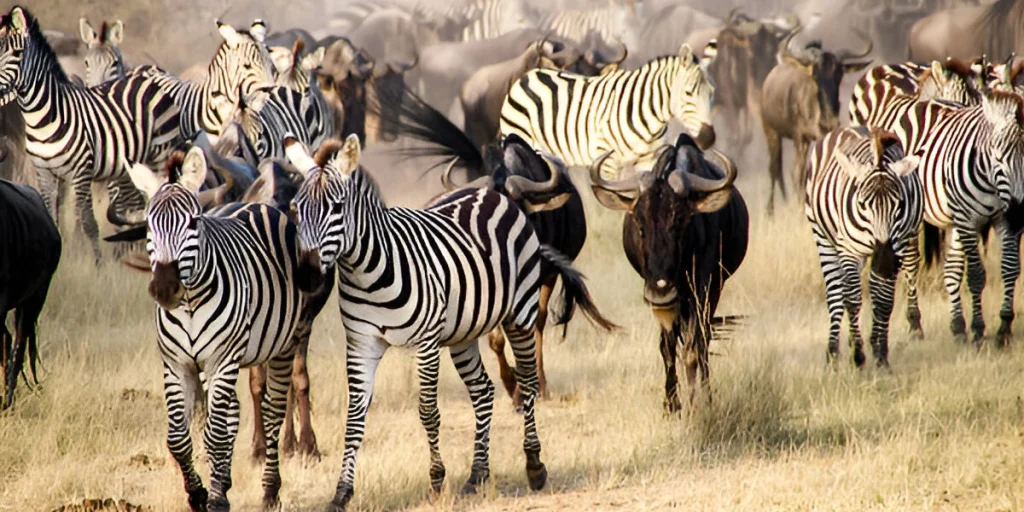
Wildebeest gather in the southern Serengeti and Ndutu Plains for calving. This area is part of the Ngorongoro Conservation Area, where rich grasslands support the birth of hundreds of thousands of wildebeest calves. Predator sightings peak here as lions, cheetahs, and hyenas move in for easy prey.
The herds begin moving northwards, entering the Western Corridor and Grumeti Reserve, where they cross rivers that are home to large crocodiles. This period involves dangerous river crossings, a key highlight of the migration.
One of the most famous parts of the migration, the herds cross the Mara River into the Masai Mara in Kenya. Witnessing this high-drama spectacle is unforgettable as the animals face predators, deep waters, and intense currents.
The herds begin their journey back south as the rains return to the Serengeti, arriving once again in the Ndutu Plains to repeat the cycle.
The migration is active year-round, but timing your visit according to these highlights ensures you witness different stages and behaviors during this journey.
The wildebeest migration is a journey driven by the search for fresh water and grazing land. Dependent on seasonal rains to keep their food sources, these animals follow the rain across Tanzania and Kenya. This movement also provides a safe space for birthing and raising their young, helping them survive despite predators and seasonal changes.
The Serengeti Wildebeest Migration plays a crucial role in maintaining the balance within the Serengeti ecosystem. Here’s how:
Vegetation Management: The grazing patterns of wildebeest help maintain the grasslands. By consuming large quantities of grass, they prevent overgrowth, which could lead to bush encroachment and reduce the availability of fresh grass.
Food Source for Predators: Predators like lions, cheetahs, hyenas, and crocodiles rely on the migration as a primary food source. The calving season, in particular, sustains many predator populations by providing an abundance of vulnerable prey.
Soil Fertility: As the wildebeest move, they leave behind nutrient-rich waste, fertilizing the soil and supporting vegetation growth, which benefits other herbivores and the overall biodiversity.
Ecosystem Connectivity: The migration serves as a natural regulator for species populations, maintaining balance across predator-prey dynamics and helping to sustain a diverse range of wildlife within the Serengeti and Maasai Mara ecosystems.
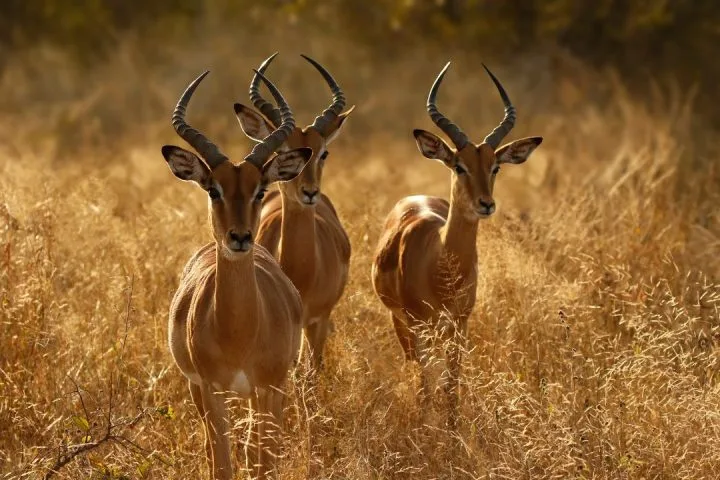
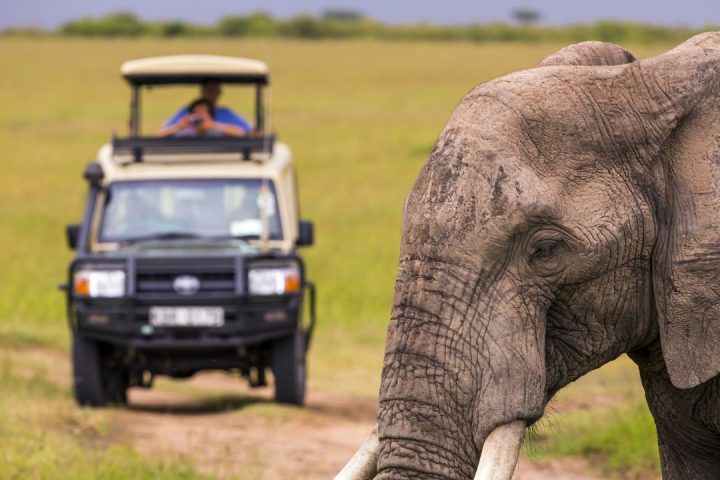
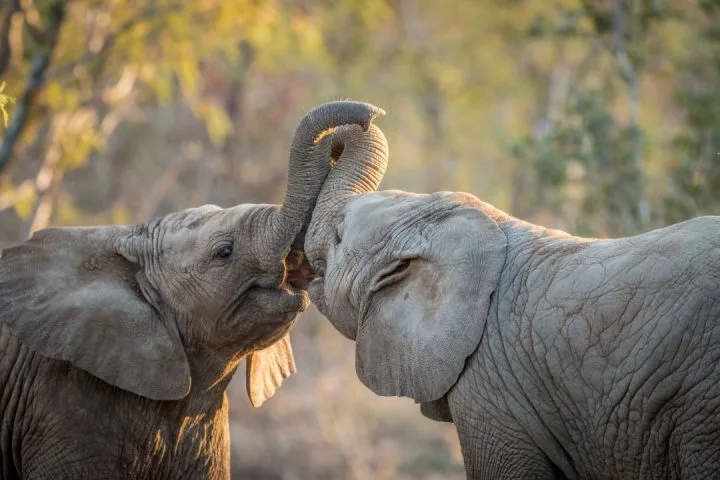
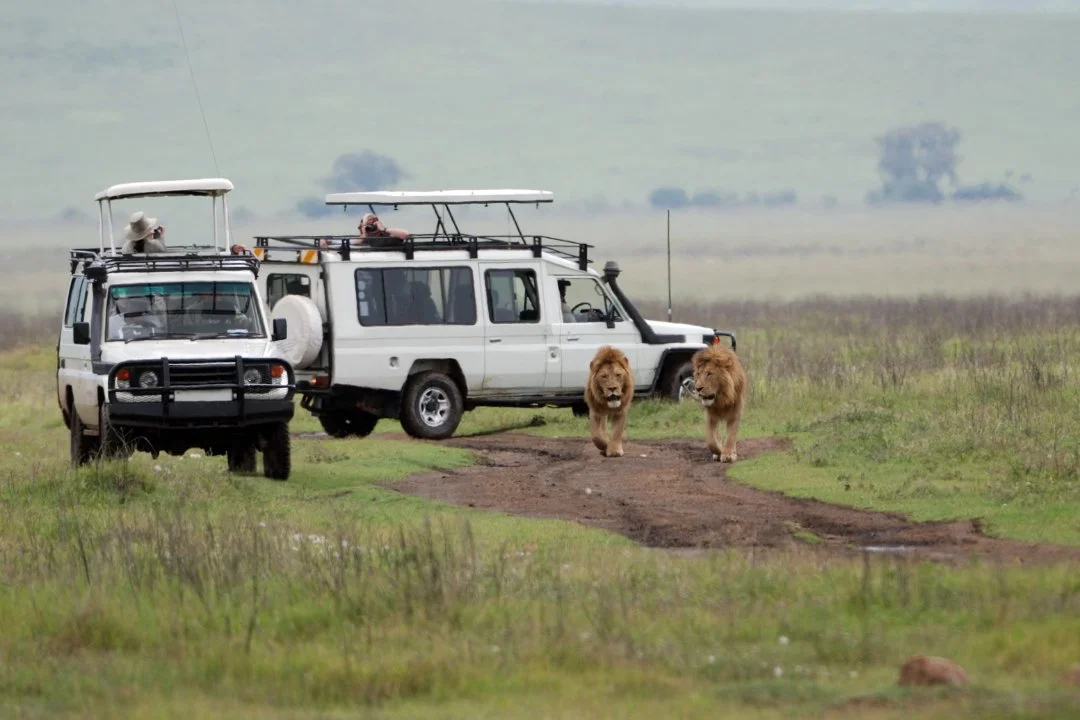
We are thrilled to share that Nafika Tours has been rated 5/5 by our satisfied clients! This honor reflects our unwavering commitment to ensuring every safari meets and exceeds customer expectations.
EXCELLENTVerified Highly Recommended Professional Operator for your Kilimanjaro Climb We had an amazing experience with the Nafika tours team. Our group of 5 inexperienced climbers took on the Lemosho route to successfully summit Mount Kilimanjaro. I had contacted the owner Elias a few months ago as we planned the trip. He was patient and answered numerous questions prior to the trip.I can’t say enough about the team we climbed with. They were fun, experienced, thoughtful, positive and professional. If it weren’t for their help and words of encouragement, I don’t think we would have had such a successful trip. We sang, ate well, slept comfortably and danced our way up the mountain.Some considerations as you plan your trip. Book early, reach out to Elias with any questions, consider portable toilets if you can, also we stayed at Kosovo base camp over Barafu camp which was quite helpful in reducing your summit climb (special permit and added cost). Our guides Eli and Benson were great and the chef Arnold made great veggie and non-veg food for our different dietary needs. All in all Nafika tours was excellent and we all would highly recommend them.Verified Review of Nafika Tours Lemosho Route Jan 2025 Our tour with Nafika was absolutely incredible. I can't say enough positive things about the company and the team. Elias was incredibly professional and organized during the planning process. Our team of guides (Eli, Benson, Frank) were skilled, enthusiastic, supportive and kind. Our team of porters and all the associated staff were committed, enthusiastic, took pride in their work, and there were incredibly supportive. All of this made our experience exceptional. The climb was hard and I don't know if we would have made it to summit without such a wonderful team. I would definitely recommend the Nafika group. They are local with extensive ties to the community. It felt great to go with this team! Thank you Elias and all members of Nafika.Verified Once in a lifetime experience with the best guides & team!! We just completed the 6day Machame route, and we couldn’t thank our guides Karrimor & Mr. Dixon enough for being the reason we made it to the summit! (along with the best of the best team!!)We chose to hike Kilimanjaro with Nafika tours due to their amazing reviews and being a local company, and they did not disappoint. From the start, everything was very well organised, we had so much detail about the trek itself, packing list, food menu and a meeting with the guides to check out gear before the trip.Once on the mountain, the team kept us motivated through the harder parts of the trek, even through the torrential rain/hail/snow, they kept us going! Our porters rushed past us everyday to make sure our tent was ready and there was hot tea and snacks waiting for us to arrive, they are absolutely amazing and couldn’t have asked for a better team! A special thanks to our waiter David & Chef who made sure we had tasty food, full water bottles and comfortable nights in the tent. Everyone was so friendly and always smiling/singing/laughing!Summit day was very challenging but SO rewarding and emotional once you get to the top, Karrimor & Mr Dixon, thank you again for being the best guides!! I would highly recommend booking with Nafika for your Kilimanjaro trek, we had an amazing experience and it wouldn’t have been possible without them! Thank you all SO MUCH for being the reason we made it to the summit!Verified An experience of a lifetime!! I climbed Mt Kilimanjaro with 2 other solo travellers in a joining group and it was one of the most special experiences I have ever had! From the start, Nafika was always very organised and had excellent communication. I had no trouble at all booking the tour and they quickly answered all my questions. During the hike itself, the mountain crew provided the utmost support and encouragement. They were prepared for every scenario, with detailed briefing before each segment of the hike given by the guides. Each meal was cooked with fresh ingredients and delicious to taste!! Overall, the entire crew was so kind and generous, and their encouragement throughout the 7 day hike made the biggest difference in my success to the top at Uhuru Peak!! I highly, HIGHLY recommend climbing Mt Kilimanjaro with Nafika Tours. It was truly an experience of a lifetime!! The team - Innocent (lead guide), Daniel (assistant guide), Priva (chef), Frank (waiter), Jumanne (tent crew), and the porters Erick, Amedeus, Pamphil, Oscar, Johana and Elnami.Verified Nafika Tours was our best choice as a local tour operator in Moshi. It was truly unforgettable. We embarked on 5 days Kilimanjaro Climb via the Marangu Route Nafika team. Godchance, our guide, was exceptional, along with Chef and Waiter who kept us well-fed and comfortable throughout the trek. We couldn't have asked for a better team. Highly recommend this local tour operator in incredible Kilimanjanjaro Trekking adventure! We want to gain more experience. We are planning to go on an adventure with them again next year. Absolutely fantastic experience.Verified Kilimanjaro Hike 2024 I just returned from Tanzania, where I had the incredible experience of climbing Kilimanjaro via the Lemosho Route. What a truly unforgettable trip! Words can hardly express how amazing Nafika Tours was.Our group of five was the perfect size, and every detail was planned out so thoughtfully. The porters race ahead to secure the best spots at the camps, and the food was absolutely amazing. The team went above and beyond to support each of us with our individual challenges, whether it was altitude sickness or sore knees.The equipment provided was top-notch tents, sleeping mattresses, and sleeping bags were all of excellent quality.A huge thank you to Nafika Tours for making this adventure such a success for all of us. I couldn’t recommend them highly enough!Verified We want to cherish mountaining achievement memory forever. Our 7 days Kilimanjaro hike with Nafika Tours was one of the most unforgettable experiences of our life. Their professionalism, attention to detail, and genuine care for our group made the entire journey seamless and enjoyable. We contact with Nafika's Representative Agnes, And he offered a detailed packing list, advice on altitude preparation, and answered all our questions promptly. Our Guide (Elisafi) just a awesome man he always try to so that we smile and porters (Daniel & Ben) were amazing, carrying heavy loads with ease and always greeting us with smiles. Their hard work and dedication were inspiring. The Nafika team ensured we acclimatized properly, with strategic rest stops and daily health checks to monitor our well-being. When we reached Uhuru Peak just as the sun rose, it was an emotional and life-affirming moment. After descending, the Nafika Tours team organized a celebratory ceremony to mark our achievement. They turn Our dream into a reality while making the journey as enriching as the destination.Verified Kilimanjaro hike with Nafika Toure 2024 We chose Nafika Tours for our 7-day Lemosho Route climb of Kilimanjaro, and it turned out to be an unforgettable experience.Everything was so well-organized, with an amazing crew of 16 people (porters, helping porters, a cook, guide, and assistant guide) taking care of the four of us. The team was incredibly kind and supportive, always making sure we had everything we needed.A special thank you to Ben and Innocent, our fantastic guides, who shared helpful, friendly advice and motivated us every step of the way to reach the summit. Efata brought so much positivity with his cheerful mood and excellent service. The cook was not only friendly but also incredibly talented, and we’ll always appreciate Anold for ensuring our comfort and Thomas for his wonderful songs that lifted our spirits. Of course, we are deeply grateful to our personal porters as well.The climb was both a challenging and deeply rewarding experience. The landscapes were breathtaking seas of clouds, stunning glaciers, and views that left us in awe. It truly was an incredible journey.Thank you, Nafika Tours, for making this such a memorable adventure!Verified Once in a life experience with Nafika Tour Climbing Kilimanjaro: A Life-Changing Experience with Nafika ToursClimbing Kilimanjaro is one of the greatest achievements of our lives. Without a doubt, conquering this massive mountain would not have been possible without the incredible support of Nafika Tours.1. Pre-Departure PreparationsWe arrived late at night after a long immigration process and were warmly welcomed by our tour guide, Innocent. During the comfortable ride to our hotel, he gave us an overview of what to expect and checked our equipment upon arrival. By the next day, everything we needed and missing equipment was in place and ready for the journey, including grabbing a local internet SIM card along the way.2. Tour Guide ExperienceInnocent was the key to our success from start to finish. Every day, he would brief us on the challenges ahead, provide tips on what to pack, check our equipment, and recommend appropriate clothing based on the weather. These insights proved invaluable.During the hike, he frequently shared his personal experiences and offered advice to help us overcome physical and mental challenges. His assistance, whether offering a helping hand or encouraging us with positive energy, was crucial. This was especially true on summit day, where his optimism and support inspired us to push through every obstacle. We laughed, talked, and stayed motivated, all thanks to his patience.3. Porter CrewThe porter crew was friendly, incredibly strong, and kind. Over the days, we grew closer to them and were always greeted warmly at the end of each leg of the hike. Watching them help us with our bags and welcoming us during the finally stretch of the day was humbling, especially when we were exhausted or feeling unwell due to the altitude.When we reached each campsite, everything was already set up: tents pitched, hot tea ready, and all essentials in place. Their service allowed us to rest and recover quickly while providing much-needed comfort in the harsh mountain environment.4. FoodThe chef tailored meals to meet our needs. Although we had prepared some of our own food, the meals provided far exceeded our expectations.Each day, the menu was slightly different. On colder days, we were served warm soups, and after longer hikes, meals were packed with protein and carbs. Every meal included fresh fruit, and the variety, portions, nutrition, and temperature were consistently perfect.5. Summit DayOn summit day, the crew prepared everything we needed, including emergency oxygen. Our guide, Innocent, also suggested an extra porter, which proved to be a great decision.The weather conditions became extremely harsh, and I’ll never forget the moment they served us hot sweet ginger tea along the way. That warmth and energy boost were a true luxury in such tough conditions. The crew stayed close to us the entire time, ensuring our safety and giving physical, emotional support. we reached the summit after an exhausting 8-hour trek. The return trip was equally exhausting, please be prepared as we were totally burn out and required a lot of the help from the porter and our guide. They helped us massively to reach back to the base camp safe and sound. ConclusionFor those comparing different tours, we can confidently say that Nafika Tours is one of the best and most trustworthy teams you’ll find. Their effort, expertise, and encouragement put us in the perfect position to conquer this mountain.Thanks to their exceptional service and support, we were able to fully immerse ourselves in the experience and enjoy every moment on this amazing mountain. It was truly a once-in-a-lifetime adventure, and we couldn’t have done it without Nafika Tours.Tips1.If possible pay for the extra toilet might to save you some trips to the public one during cold rainy nights 2. Bring extra portable charging as battery usage in cold weather decrease our devices performances3. Make sure your tips reflect your appreciation to the crew as they are really a part of your success